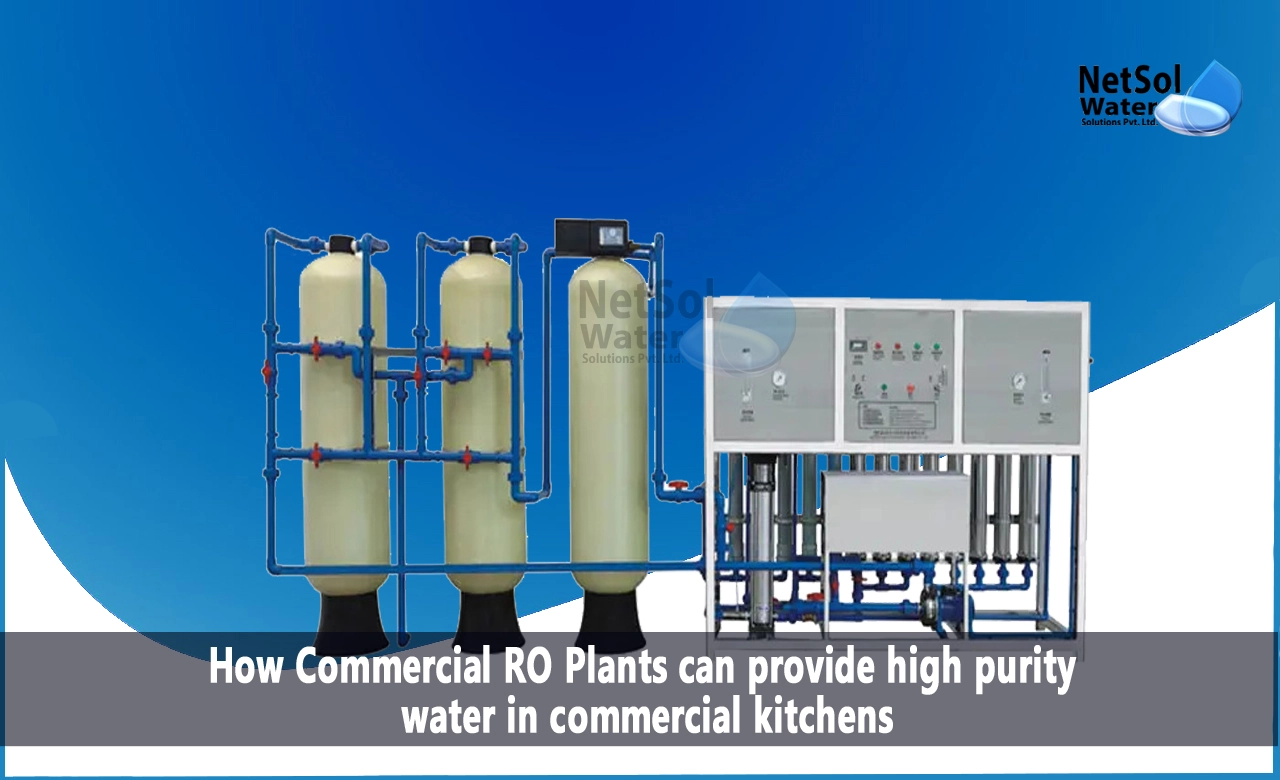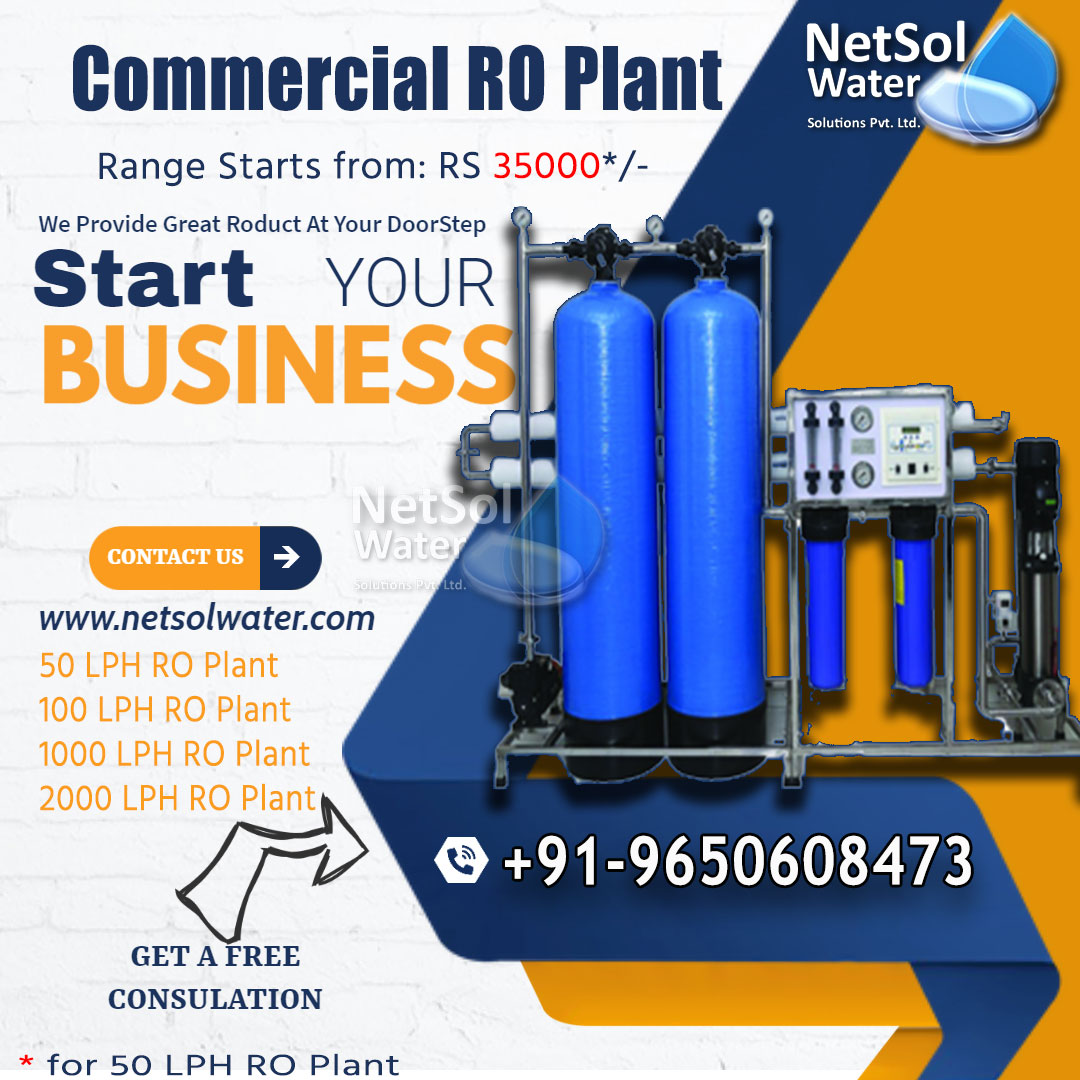How RO Plants can provide high purity water in commercial kitchens?
Water is a critical ingredient for commercial kitchens. From cooking food to cleaning dishes and utensils, water usage is ubiquitous in food service. However, impurities and contaminants that are harmless at the low levels found in municipal tap water can concentrate in commercial applications to unacceptable levels. This exposes staff and customers to potential health risks and impacts the taste of food and beverages.
In this article, we’ll examine how commercial-scale reverse osmosis (RO) systems can cost-effectively produce the high purity water needed in restaurant, hospital, and hotel kitchens. We’ll cover RO technology basics, water contaminants of concern, sizing considerations, and installation examples. With insights from this guide, commercial kitchens can reap all the benefits of purified water to meet the highest culinary standards.
Reverse Osmosis Fundamentals
Reverse osmosis is a membrane separation process that removes dissolved salts, organics, metals, and other impurities from water by pushing it through a semi-permeable membrane.
Key components of commercial RO systems include:
- 5 micron sediment prefilter - Traps particles that could foul membrane.
- Activated carbon prefilter - Removes chlorine and organics that affect taste.
- Array of thin-film composite membranes - Polyamide sheets reject impurities while allowing purified water passage.
- Multistage pumping system - Provides needed pressures of 70-150 psi to overcome osmotic pressure.
- Post-treatment filters - Polish water, add minerals, and stabilize pH as needed.
- Monitoring instruments - Track water quality and system diagnostics.
- Storage tank - Holds pressurized treated water ready for distribution.
System capacity ranges from 50-1000+ gallons per day depending on the scale of the kitchen. Larger systems often run continuously to meet constant demand. Next, we’ll look at water contaminants in commercial kitchens.
Water Quality Concerns in Commercial Kitchens
While municipal tap water is regulated for safety, issues can arise when significantly concentrating water by evaporation and steam production in commercial food service operations. Potential contaminants include:
- Hardness minerals - Calcium and magnesium contribute scale on steam equipment.
- Chlorine - Causes unpleasant taste and odors.
- Organic compounds - Disinfection byproducts give objectionable taste.
- Bacteria - Can propagate in humid environments and water storage tanks.
- Heavy metals - Lead, copper, and zinc from old piping.
- Nitrates/Nitrites - From agricultural runoff. Risk of methemoglobinemia.
- Per- and polyfluoroalkyl substances (PFAS) - Non-stick coatings can leach into water.
- Sodium - Levels are increased by some water softeners.
- Turbidity - Affects clarity of water-based foods and drinks.
Together, these common tap water impurities can make unpleasant tasting food, damage steam equipment, and even pose health hazards if concentrated enough. Purified RO water avoids these pitfalls.
Sizing RO Systems for Commercial Kitchens
Properly sizing an RO system is crucial for meeting the purified water demands of commercial kitchens. Steps for selection include:
- Estimate daily water needs - Consider meal service, sinks, steamers, coffee/tea, etc. Typical range is 200-1500 gallons per day.
- Determine peak demand flow rates - Dishwasher and hand sink use during busy meal rushes. 25-50 gpm is common.
- Allow for future expansion - Additional equipment drives increased water demand over time.
- Choose suitable RO capacity - Pick a system rated for peak flows with 30% excess. 1.3X average is a good rule of thumb.
- Include sufficient storage volume - 500-2000 gallon pressurized tanks let RO operate continuously to meet variable demand.
- Select proper prefilters - Sediment and carbon stages for feed water quality.
- Validate capabilities for high recovery - Look for systems delivering 50-75% purified water across membrane life.
Larger kitchens may utilize multiple smaller RO units for redundancy. RO membrane surface area, number of elements, and array configuration also impact productivity. Proper sizing avoids both shortfalls during rush periods and overpaying for excess capacity.
Next, we’ll look at real-world examples of commercial RO systems in action.
Installation Examples and Applications
- Hotel resort kitchens need constant purified water for meal preparation, drinking water, ice machines and laundry. A 500 gpd RO unit with a 2000 gallon tank meets continuous demand.
- A hospital kitchen installed multiple 150 gpd undercounter RO units to provide purified water to various equipment. Daisy chaining allows one unit to fill in if another requires service.
- University dining halls require ~1000 gpd during meal rushes. A 2-stage RO system with 1500 gallons of storage ensures adequate capacity.
- Coffee shop chains use RO to remove tastes and odors that impair specialty coffee. Small 50 gpd undercounter systems suffice.
- Butcher shops and meat processing plants apply food-grade RO water for making sausages and cold cuts for safety and consistency.
- Bakeries use RO water for consistent, quality doughs and batters. Yeast fermentation benefits from RO’s lack of chlorine.
- Soda fountains need RO to make syrups to avoid minerals that compromise carbonation and taste
In summary, commercial RO systems provide the high-purity, high-volume water these operations need while safeguarding health and enhancing products.
Conclusion
Access to abundant purified water is essential for commercial kitchens to function safely while producing great tasting food and beverages. Reverse osmosis technology is perfectly suited for cost-effectively achieving water quality standards necessary in the food service industry.
RO removes the array of dissolved contaminants that can concentrate in unpredictable and undesirable ways when tap water is heavily utilized for steam, hydration, cleaning, and food prep. By starting with impurity-free water, commercial kitchens avoid hazardous concentrations of hardness, chlorine, bacteria, heavy metals, and other problematic compounds.
Properly sized RO systems with sufficient storage marry reliable contaminant reduction with high volumes to meet peak demand fluctuations. Multiple units allow for redundancy and maintenance rotations.
Given the critical impact of water on finished quality and operations, RO is a wise investment for restaurants, cafeterias, bakeries, breweries, and any food service establishment. Owners gain peace of mind that their kitchen is optimally equipped to produce great tasting products that are safe for customers and staff while avoiding damage to expensive steam and beverage equipment. As water utilization expands in commercial food service, so too will reverse osmosis systems as a crucial component of commercial culinary infrastructure.




